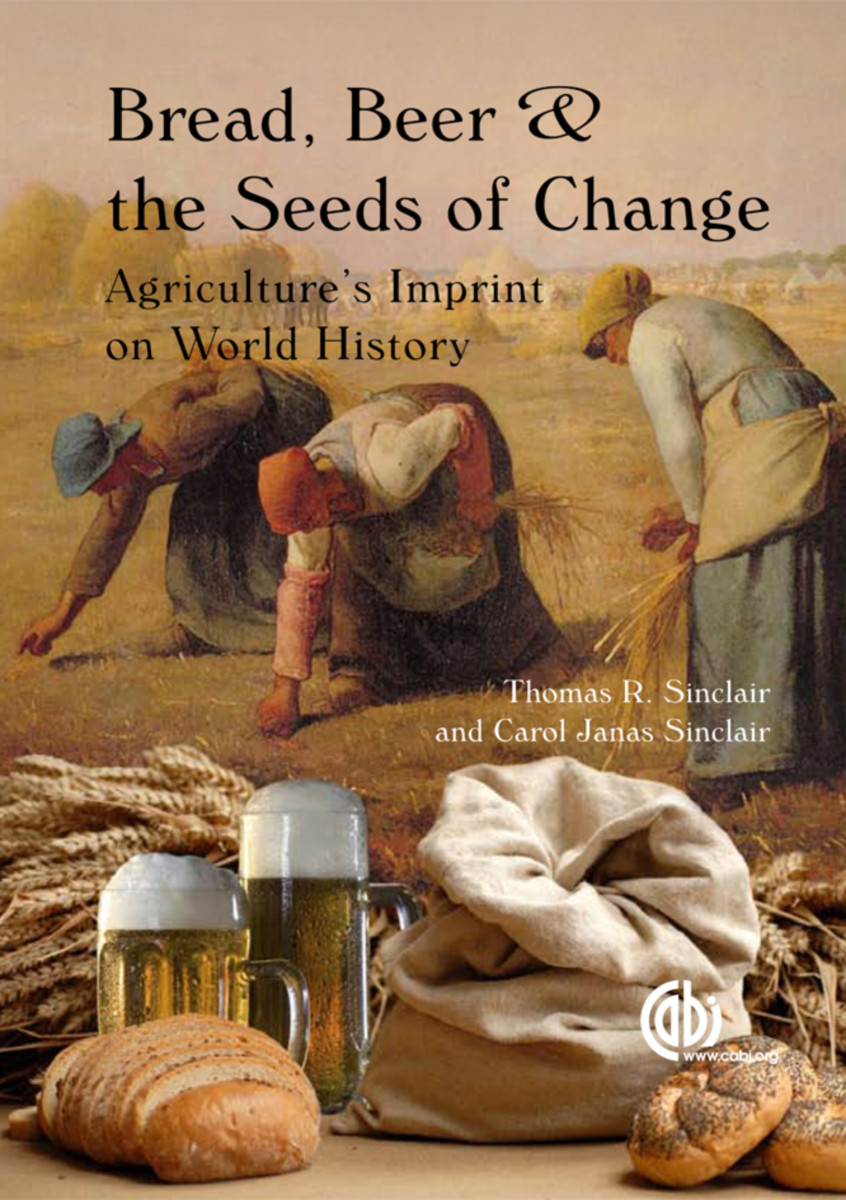Bread, Beer and the Seeds of Change
Agriculture’s Imprint on World History
- Publisher
CABI - Published
24th August 2010 - ISBN 9781845937041
- Language English
- Pages 208 pp.
- Size 6.875" x 9.75"
- Request Exam Copy
- Publisher
CABI - Published
24th August 2010 - ISBN 9781845937058
- Language English
- Pages 208 pp.
- Size 6.875" x 9.75"
- Request Exam Copy
The history of humankind is intimately tied to the history of agriculture: powerful societies rose, persisted and waned in parallel with their food supply systems. Describing what crops were grown, the constraints on their production, and the foods that were obtained, this book traces the impact of cropping and food preparation in 10 societies that were among the most powerful and influential in history, detailing how technology varied and developed as it related directly to agriculture and food production. The book covers the background of agricultural development, early agricultural societies, and the advancement of technology from the ancient Greeks and Romans to the present. It concludes by addressing the implications for the future of agriculture and food supply as grain production moves towards biofuels. A compelling text for all those interested in the history of society and civilizations, global agriculture, and what it means for the future, this text is also an essential reference for students of agriculture, food technology, history and anthropology.
"Concise and clearly written... The authors use their considerable expertise in crop sciences and nutrition to present a simplified, but reasonably comprehensive, description of the agronomy of grain crops, the processing of such crops for different foods, and some of the historical development of grains and related foods."
- Agricultural History
"This work is a readable history of one of humankind's fundamental staples... Its straightforward approach makes it an engaging survey of the evolution of a basic food source. Summing Up: Recommended"
- Choice
"This stimulating and easy to read book should appeal to a general readership, including agriculturalists, anthropologists, historians and food technologists."
N. L. Innes - , Experimental Agriculture
"Bread, Beer and the Seeds of Change is more than just a mere history or sociology text for discussions in a college classroom. The book is also an interesting read for the casual reader. I found the insets used throughout the book provided readers with a wealth of interesting insights into agriculture and sociology.
Homer C. Emery - Economic Botany
A word of warning; this book may take a while for some to read, especially, those who happen to be beer connoisseurs. I experienced an unexplainable thirst for beer starting with Chapter Four after reading a recipe and instructions for brewing credited to George Washington. All readers may not have this problem, but for me I thoroughly enjoyed reading Bread, Beer and the Seeds of Change, with a bottle of beer close at hand."
Part I. Background
Chapter 1. Why Agriculture?
Chapter 2. What Crops to Grow?
Chapter 3. Beer and Bread
Chapter 4. Human Nutrition and Health
Chapter 5. Cropping Requirements
Part II. Early Agricultural Societies
Chapter 6. Sumerian (~3500 to 2334 BCE)
Chapter 7. Egyptian (~3000 to 1070 BCE)
Chapter 8. Chinese (206 BCE to 220 CE)
Chapter 9. Bantu of Africa (~500 BCE to 300 CE)
Chapter 10. Maya (~150 BCE to 910 CE)
Part III. Technology Advances in Western Societies
Chapter 11. Athenians (550 to 334 BCE) / Romans (509 BCE to 410 CE)
Chapter 12. Feudal Europeans (800 to 1347)
Chapter 13. British (1700 to 1850)
Chapter 14. Development of Science and Technology (1850 to 1950)
Chapter 15. Americans (1950 to present)
Epilogue: Future of Grain Fermentation
Thomas R. Sinclair
Thomas R. Sinclair is at the University of Florida.
C. J. Sinclair
C. J. Sinclair is an Independent Researcher, USA.


